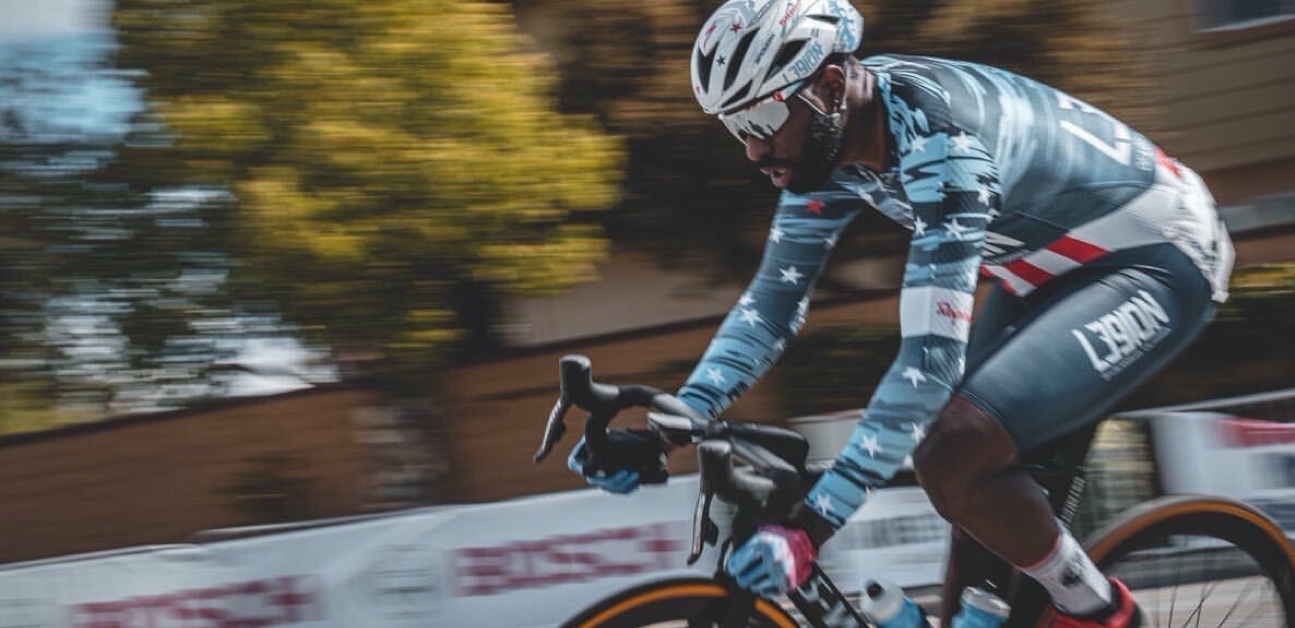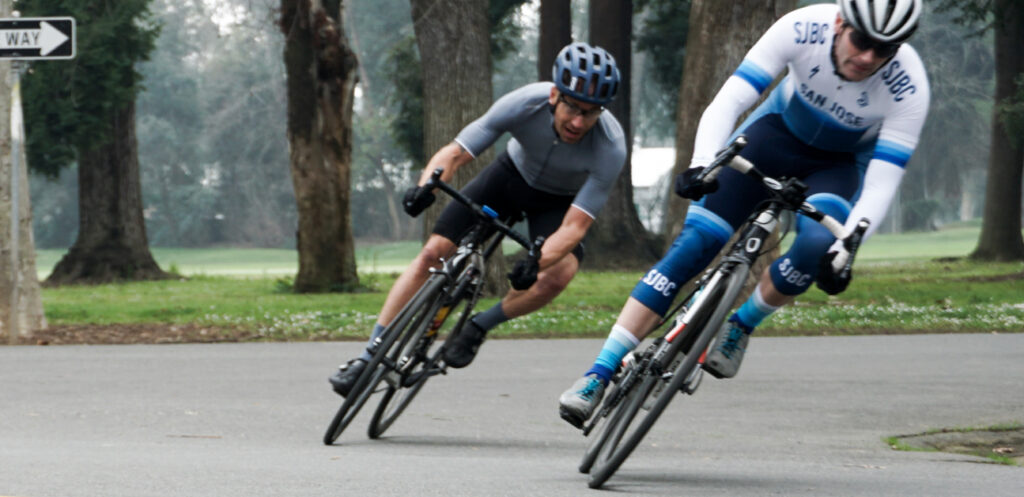Criterium Strategy with Legion of LA’s Justin Williams

Criteriums are fast, intense, and unpredictable. How can you use team tactics and sprinting strategies to up your crit game? We asked an expert.
For more information on Justin Williams and crit racing, check out Ask a Cycling Coach Ep 263.
Who is Justin Williams?
Justin Williams knows a thing or two about crit racing. As one of the most successful and recognizable American cyclists on the domestic scene, Justin has 11 national championships on the road and track dating all the way back to 2006. He is currently reigning elite national Criterium champion, a title he has won twice in a row.
Justin and his brother Cory are also founders of Legion of Los Angeles, the most dominant team in American crit racing. The team is well-known for its commanding tactics and ability to control races, with a world class leadout train that makes them almost unbeatable. Legion is at the top of the sport, but the strategies the team uses to win races are useful to racers and teams at all levels.
Building the Team
Legion approaches bike racing as a true team sport , assigning each rider a specific “position” or role with a designated task to accomplish. In a race, team members are categorized as either High FTP Riders, All-Arounders, and Sprinters. The High-FTP riders control the pace and set tempo at the front. The All-Arounders chase down and launch attacks, and serve as the core of the team’s leadout train. Finally, the Sprinters work to safely conserve their energy throughout the race, saving themselves for the crucial final seconds. Each role serves a purpose, and that purpose is winning- as a team.
Key takeaway: Each rider in the team has a specific assigned role.
Team Dynamics: Working as One
The entire Legion team works in real time as a cohesive unit, adapting their strategy to respond to changing circumstances. Communication is crucial, as riders check in with each other and stay aware of each other’s condition and position. Many racers are afraid to talk with teammates in the peloton for fear that opposing riders will overhear strategy. In Justin’s experience this is a non-issue in a loud, stressful race, and the benefits of verbally strategizing outweigh the risks.
Adaptive Training
Get the right workout, every time with training that adapts to you.
Check Out TrainerRoadThrough the individual actions of its members, the team works together as a cohesive unit to control the race. One simple example of this is in late-race cornering, when the team is at the front setting the pace. As the peloton nears a turn and begins to swing wide, Legion’s riders fan out and stagger their positions. This blocks both the inside and outside line into the turn, preventing attacks through the corner. The team compresses back down to single-file as they exit the turn, their control of the race preserved.
Teamwork also requires each rider to stay aware of the position and momentum of their teammates, and to be willing to adjust their individual goals as the situation changes. Recently, Legion sprinter Cory exited the last turn of a race with a clear shot to the finish, but he knew several opposing riders were close on his wheel. He was also aware that his teammate Tyler was exiting the turn several wheels back with even more momentum than he had. Instead of sprinting and potentially leading his opponents to the line, Cory sat up and blocked the riders behind him, allowing Tyler to pass and win the race. Cory’s decision sacrificed his own chances, but ultimately guaranteed the team a win.
Key Takeaways: Mid-race communication and awareness are key. The entire team works as one cohesive unit to control the road, and each rider pays attention to teammates’ positions and opportunities.
The Leadout
An effective sprint leadout is one of the defining features of what makes Legion of Los Angeles so successful. Many racers think this is limited to the last lap, but Legion’s leadout starts earlier and consists of more than just an acceleration to the line.
With about 15 laps to go, the team’s riders gather near the front of the race. This can take a while as riders who’ve been resting further back in the pack need some time to move up.
With 10 laps to go a high-FTP rider moves to the front, setting a hard but sustainable tempo. This pace, used in combination with defensive cornering, prevents opposing teams from moving up. It also prevents attacks, as any opposing rider would have to start from far back, moving around the entire team. Even if an attack does go off the front at this point, the L39ion rider doesn’t surge the pace to catch it, but subtly ramps up speed to reel it in gradually. This steady riding style helps to preserve the freshness of the sprinters sitting several wheels back.
With 3 laps left, the pace-setting is taken up with shorter efforts by the all-rounders. Finally, the real leadout begins with about a lap and a half to go. Each rider does a progressively shorter and harder pull at the front of the field, with the final leadout provided by one of the team’s 2 sprinters.
Key Takeaway: The leadout begins long before the final lap, and is organized to use each rider’s specific strengths.
Sprinting Strategy and Technique
What you do on the first lap matters on the last lap.
Justin Williams
L39ion has several formidable sprinters, but there’s more to sprinting than raw power- tactics and strategy win bike races, and smart riders often beat stronger ones. Justin says there are actually two sprints at the end of the race- the obvious one for the finish line, and the more subtly important one for position through the race’s final turns. Lose this battle and you won’t be in a position to sprint for the win to begin with; win the fight for the last corner and you can usually guarantee yourself a podium finish, at least.
As the sprint begins, a useful trick is to allow a small gap to open between you and the rider in front of you. This allows you more time to accelerate while remaining in the draft, and prevents you from getting boxed in. It also buys you a bit longer to look around and analyze your position without approaching dangerously close to the wheel ahead of you. When it is safe to do so, only pull out into the wind after gaining this momentum, allowing the speed you developed while sheltered to sustain you to the line. Avoid shifting if possible- start your sprint in a gear you can remain in, and up your cadence to increase power.
Key Takeaways: Smart positioning is more important than being the strongest rider. Try letting a little space open ahead of you in the final sprint, so you can safely accelerate in the draft before heading out into the wind.
For more cycling training knowledge, listen to Ask a Cycling Coach — the only podcast dedicated to making you a faster cyclist. New episodes are released weekly.
